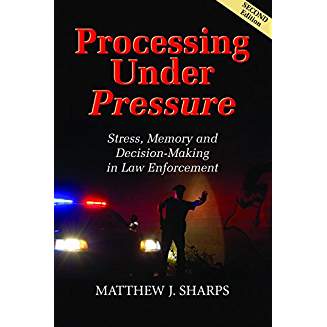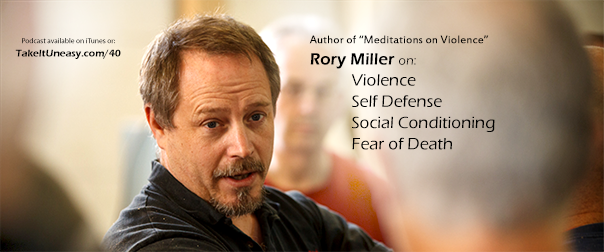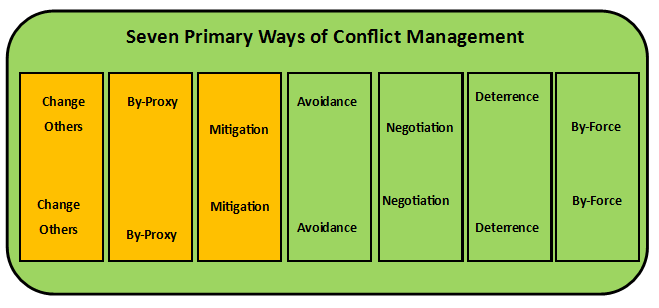I’m part of that generation of police and corrections officers who was raised with the idea of a “Force Continuum.” We were taught that there were specific levels of force, each level had certain effects and was justified by certain criteria. Most agencies have moved away from the idea of a continuum. Not because it is ineffective or out of a fear that people would misunderstand and think it was a “connect the dots” game that required every step be touched on the way up the ladder.
They have been rejected because the courts have stated explicitly that the court would not consider the continua as elements of reasonableness. That doesn’t make the continua bad practice or bad teaching or even inaccurate, it simply makes them an unacceptable part of one piece of the legal process.
The continuum I was trained on had six general levels of force. Force for our purposes means anything that can make a person do something they don’t want to do or stop them from doing something they want to do.
Our six levels were: Presence, verbal, touch, physical control, serious physical control, and deadly force. For conflict resolution, I’d like to propose eight categories. Not definitive, just for this discussion. The eight options I want to mention are: Avoidance; Acquiescence; Presence; Verbal; Touch; Force; Pain; Damage; and Deadly Force.
There are always three over-arching factors that dictate what level of force is appropriate. The first is the necessary outcome. If you are under serious attack, your own survival should be non-negotiable. If you have a mission to accomplish, such as arresting a felon, that job must be finished. If you are negotiating a contract, there will be things you need in the contract and things you need excluded.
The second is your safety. Not just survival, but a scale from discomfort through pain to injury, to long-term injury, to death. You want the least impact on your life.
The third is the bad guy. Legally and morally, you will be expected and required to solve the problem (accomplish the mission) with the minimal harm to the bad guy.
These three things are always a part of the equation, but they will have different weight depending on the situation and your individual value system. I was taught as a military 91A (medic) that “A dead medic never saved anyone.” My safety first, the mission second, and the enemy a very distant third. In practice, however, many medics put their own lives second on the list. And in some circumstances, the combative person is the mission, and the medic will not and should not harm a combative patient in order to help the combative patient. It’s a balancing act, with few simple solutions.
Somewhere in the balance of mission and the intent to minimize harm to all involved, there is a “best” level. Generally, higher levels of force are faster, easier, more effective and safer (for the one using the force.) Shotguns simply solve problems faster than negotiation, and the problem solved with a shotgun tends to stay solved. But the higher levels of force require higher levels of justification. Boundary setting doesn’t draw the legal or social scrutiny that shooting does.
The Lower Levels of Force.
Avoidance is simply not being in the bad place at the bad time. The skills involved include reading terrain, reading social patterns, reading people and profiling places. Those skills must be combined with the will to act on your decisions. If you know that one of your friends is a trouble magnet, the information is useless unless you are willing to be rude and act. “No, I’m not going to the pub with you.”
Acquiescence is on this list because it has worked. Like many strategies, however, it only works until it fails and when it fails, it fails catastrophically. Acquiescence, without a higher-force back-up plan, cedes all initiative and power to the threat. In addition, under adrenaline and with high stakes, the hind brain looks for any strategy that has worked and acquiescence quickly becomes a habit. Acquiescence as a strategy only makes sense when one is certain that other options will fail and will be met with punishing force. Don’t be fooled, since this is what a threat will want you to believe. Acquiescence is sometimes a survival choice for the victim, but it is exactly what the predator wants.
Is there ever a time to acquiesce? It’s a personal decision when dealing with bad guys, but I’ll give you one example. Lawful arrest, when the person arresting you has the power of the government behind the badge and not just the right but the legal responsibility to overcome resistance, you will lose. And you will be punished. “Resisting arrest” is its own separate crime.
Presence is idiosyncratic. How you move, dress, stand, and what you look at largely determines your victim profile. Some people present as harder targets than others. Being large and fit certainly helps, but small people who move well are also avoided by predators. Your clothes can send a “hard target” message, but without the body language to back it up, particularly the alertness, wearing 5-11 clothes and Oakley sunglasses marks you as a wannabe.
Presence as an action is simply adding information. When you show up as a witness, many bad guys will cease their crime. This can be accentuated as well. I’ve stopped road rage incidents by visibly picking up a cell phone and prevented a probable burglary of a neighbor’s house by walking up to the suspicious car, visibly taking a picture of the license plate and walking back to my own home.
Verbal prevention and de-escalation is a vast skill. It includes everything from pleading to negotiation to naked threats. It is just as personal as presence, but almost infinitely expandable. A hostage negotiator might need to cajole, calm, threaten (rarely) and run a con all in a single conversation.
Presence and verbal are the best options when they have any chance to work. Excellent chances of success with very little chance of physical injury. But part of the skill, especially in verbal de-escalation is recognizing the point of no return, the moment where it will go physical no matter what you say.
Touch is barely a level. That is the soft hand on the shoulder to get a drunk’s attention or a calming embrace. It is definitely communication and can be seen as an extension of verbal. I separate it out for two reasons. The first is that in many jurisdictions, touching someone without consent can be construed as battery. For this reason alone, I prefer to use verbal tactics rather than escalate to even the lightest touch. The second reason is that if I can touch the threat, the threat can touch me. If I have misjudged the danger, touch without control puts me at risk.
Force is using strength and leverage to make someone do something or stop that person without resorting to pain or risking injury. Pushing someone away, or holding back a friend who wants to fight. It has many of the dangers of the touch level.
Pain is also idiosyncratic. Inflicting pain is a form of communication. Which means that if someone is not willing to communicate, or unable due to mental illness, emotional distress or a bad drug reaction, pain by itself rarely works. Pain compliance works through an unstated bargain, “If you quit fighting, the pain will stop.” A threat in excited delirium feels the pain of a pressure-point gouge, but is incapable of reading the bargain and often fights harder.
There is a hard transition between this level and the next. Tactically, morally and legally the levels we have just covered are very different than the higher levels. The levels so far have been appropriate when you are at little or no risk, when you are in control, when you are winning. In police terms, these are the techniques that will likely work on a non-compliant threat. A non-compliant threat is resisting, but that is an entirely different world than a threat trying to injure or kill you.
This split is critical to understand. If you attempt to use a low level of force in a high level situation, you will likely lose. If you use a high level of force in a low level situation, it won’t be legal self-defense.
The Higher Levels of Force
Damage is different than pain. Pain hurts, but doesn’t hamper your physical abilities. When damage is justified, I am trying to break the threat or part of the threat in such a way that he loses the physical ability to hurt me.
Realistically, there is an element of communication to this as well. Most people quit psychologically. I’ve stayed in fights with shoulder dislocations, broken ribs, fingers and (this is sport) twice with complete ACL tears. The shoulder, finger and knee injuries hampered my abilities. The ribs just hurt.
Deadly force is appropriate when you need to shut down the entire threat immediately. Jurisdictions vary slightly in the wording of the legal definition, but “deadly force” doesn’t just mean killing. It is death or “grievous bodily harm.” Again, the definition of “grievous” in the moment is going to be hashed out in court by lawyers. Generally, anything that has a permanent effect or impairs a life function will be called grievous harm. Permanent scarring. A permanent limp. Partial or total blinding… If you want to use an eye gouge, you need to be able to justify deadly force.
Deadly force is only justified when faced with deadly force. For anything less than immediate death or grievous bodily harm— or rape, every jurisdiction I have checked includes rape under the definition of grievous bodily harm and a rape attempt therefore justifies lethal defense— killing and maiming is out of bounds.
There is a saying, “When all you have is a hammer, everything looks like a nail.” When all you have is training in a single option, it is easy to convince yourself that it’s enough. It isn’t. A pacifist who eschews the physical force options is left with only acquiescence, relying on the mercy of others. Negotiation from a position of weakness, whether that weakness comes from a lack of skill or of will, negotiation without force options is only begging.
Conversely “kill them all and let god sort them out” is almost never legally, ethically or even tactically appropriate.
If you are ignorant of an appropriate option for a given situation, you are helpless in that situation. And always remember that none of these skills have an end-state. You can always get better and learn more.
For more information on different force options, we recommend “Scaling Force” by Rory Miller and Lawrence Kane.







